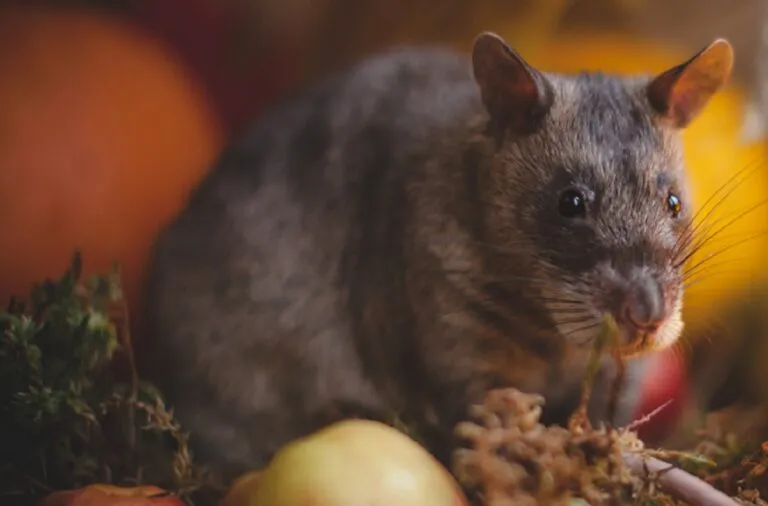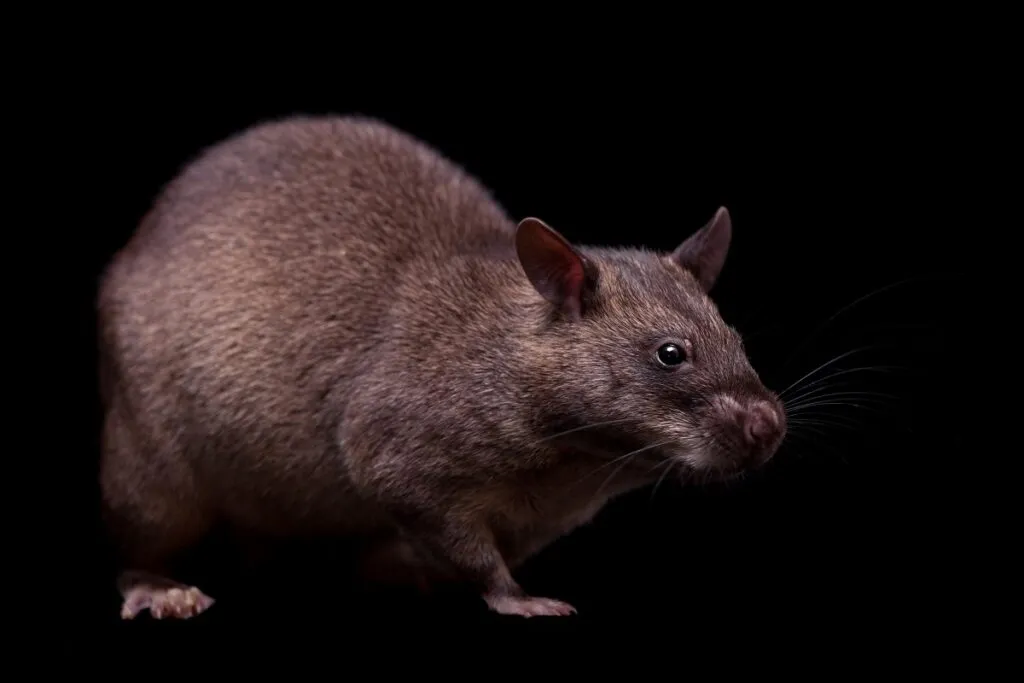Unlike rats, African Pouched Rats are loners. Cohabitation in one enclosure can become highly risky, particularly among same-sex partners.
To prevent breeding, a communal living setup is only feasible provided there’s ample space for the animals to avoid each other and, if possible, the rats are neutered.
How big should the cage be?
African Pouched Rats are sprightly creatures that traverse vast distances in the wild in search of food. Standard rodent enclosures are generally ill-suited for African Pouched Rats as they tend to offer insufficient space and opportunities for activity.
A better option is to construct a spacious cage that allows the rodent to roam across various levels. The following minimal dimensions are recommended: 2.5 x 2 x 2 metres.
Given their particularly strong teeth, even aluminium bars pose no challenge to them. Therefore, when constructing a cage, ensure you use bite-resistant materials that are safe for your rodents.
Note: Prior to procurement, check local veterinary regulations in your area regarding the keeping of African Pouched Rats.
What climate does the African Pouched Rat require?
The cage of your African Pouched Rat should be situated in a room with a temperature of 22 to 26 degrees Celsius. Ideal humidity levels are between 60 and 70 percent. Since African Pouched Rats favour warmer climes, also shield the cage from draughts.
Caution: If humidity drops below the advised levels, the tail tip may wither.
What facilities are necessary?
To keep the animals in a species-appropriate way, it’s vital to provide ample opportunities for movement. Natural branches and wooden ramps at varying heights are perfect for climbing.
Suitable nesting materials include hay, straw, and newspaper. To satisfy their desire for occupation, you can also hide food for your pets.
As they are also adept swimmers, you could incorporate a small pool with varying depths and easy access into the cage. However, since they often use the pool as a toilet, it’s essential to change the water daily.
Is free-roaming possible?
Never leave your exotic pets unattended or in a room with dangerous objects (e.g., electrical appliances, cables). The rodents have a penchant for nibbling on all materials, which could result in significant damage or self-injury.

